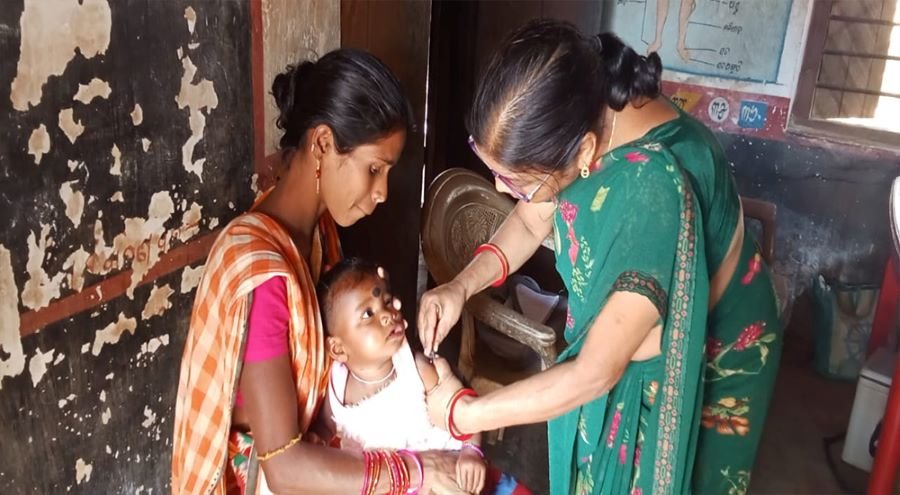OPINION
CHALLENGES OF ADOLESCENT HEALTH
Dr Santosh Jain Passi Reports On Nutrition/Health Concerns of Adolescent Girls for Breaking the Inter- Generational Cycle of Malnutrition.
Adolescence – the transient phase of life from puberty to adulthood comprises rapid physical growth coupled with fast-paced psychosocial, cognitive and emotional development. India has nearly 253 million adolescents (constituting >1/5th of total population) who are in dire need of appropriate nutrition, education, counselling and guidance (Census, 2011). Health of an adolescent girl indicates her health status during later years of life. Several adulthood diseases have their roots in adolescence; many of the premature adolescent mortalities are either preventable or treatable and in many cases, the adolescents may suffer from life-long chronic illnesses/disabilities. Major health issues of the adolescents include nutritional deficiencies, mental-health problems, early pregnancy/child-birth, HIV/sexually transmitted infections, other infectious diseases, violence, unintentional injuries and substance abuse. WHO has reported that during 2012, nearly 1.3 million adolescents had died from preventable/treatable illnesses. Globally, India has the maximum number of adolescents. Considering the huge potential of this demographic and economic force in national development, it is crucial to invest in their education, health and development. The investments in adolescent reproductive/sexual health alone can yield enormous dividends in terms of delayed age at marriage, reduced incidence of teenage pregnancies, meeting the unmet contraception needs, reduced maternal mortality and lowered prevalence of HIV/STI. In view of rapid growth spurt and increased physical activity, nutritional requirements of the adolescents are rather high, particularly in terms of energy, protein and various vitamins/minerals. On the other hand, adolescents are highly prone to eating disorders like anorexia nervosa and binge eating. Unhealthy dietary habits with greater reliance on junk foods, poor lifestyle practices and physical inactivity are the major cause of nutritional disorders; during this phase, inadequate nutrition can lead to stunted growth and delayed sexual maturation.
Teenage pregnancy/childbirth complications are the second-most cause of mortality among 15-19 year olds; both the mothers and their new-borns are at an increased risk. Babies born to mothers aged < 20 years face a far higher risk of being still-born or die within the first week of life. There is a greater likelihood of such children being low birth weight and suffer from the risk of long-term health effects. However, many of these issues can be addressed by routine screening followed by nutrition/health education.
Indian government has recognized the importance of influencing health-seeking behaviour of the adolescents and has, thus, initiated a number of schemes and programmes; however, the age-groups covered under these vary. Various schemes/programmes include:
Rashtriya Kishor Swasthya Karyakram (RKSK) – directed towards holistic development of the adolescents, was launched by the MHFW in January 2014. Rather than being limited to sexual & reproductive health, the programme addresses issues relating to nutrition, noncommunicable diseases, injuries, violence, mental health and substance misuse with a special focus on health promotion. By reorganizing the existing public health system, it is expected to reach out to 253 million adolescents – particularly those from marginalized households, through community based interventions, facility based counselling, social & behaviour change communication and by strengthening the adolescent friendly health clinics. It is also proposed to address adolescent health holistically along with skilled counselling support at the drop-in clinics in identified health facilities. These will also take care of the adolescents living in insecure environments and address the issues relating to HIV/AIDs. As part of RCH-II, Adolescent Reproductive and Sexual Health (ARSH) programme proposes to ensure improved service delivery for adolescents through routine sub-centre clinics as well as on fixed days/timings at the PHCs and CHCs. Under outreach activities, the package of services comprises preventive, promotive, curative and counselling services for addressing their reproductive and sexual problems. Under School Health Programme, emphasis is laid on nutritional interventions, promotion of healthy lifestyle, counselling and immunization. Adolescence Education Programme of the MHRD envisages to impart age-appropriate and culturally relevant accurate information to the adolescents. In addition, it promotes healthy attitudes and development of appropriate skills through curricular/co-curricular activities for empowering them to face the real life situations. National Program for Youth and Adolescent Development by the Ministry of Youth Affairs and Sports is a merger of four centrally sponsored schemes (earlier named as Promotion of Youth Activities & Training, Promotion of National Integration, Promotion of Adventure and Development and Empowerment of Adolescents). Apart from inculcating leadership qualities and personality development, it motivates the youth to channelise their energy for nation building.
Some of the programmes particularly directed towards adolescent girls are: Kishori Shakti Yojana which aims at improving health, nutrition and educational status of girls aged between 11-18 years. The major aim of Balika Samridhi Yojana is to raise the age at marriage of adolescent girls; the programme envisages to achieve this goal by bringing about improvements in enrolment and retention of the girls at school. Another programme – primarily for out of school adolescent girls (11- 18 years), is Rajiv Gandhi Scheme for Empowerment of Adolescent Girls (SABLA). Under this, the adolescent girls are provided iron-folate supplementation, nutrition/health education, adolescent reproductive/sexual health and life skill education; and for older girls (>16 years) vocational training is imparted as part of National Skill Development Programme. In response to the alarming problem of anaemia, the ministries of Health, Education and WCD launched a nationwide Weekly Iron and Folic Acid Supplementation (WIFS) programme in January 2013 targeting nearly 130 million adolescent boys and girls. Menstural Hygiene Scheme (MHFW) aims at promoting menstrual hygiene among adolescent girls from rural areas. Other programmes include Sarva Shiksha Abhiyan for providing free and compulsory education to 6-14 year olds; Nehru Yuva Kendra Sangathan for empowering the rural youth; National Service Scheme for personality development of the students through community service. Narcotic Drugs & Psychotropic Substances Act, 1985 prohibits the sale of illicit drugs or substances to minors. Extending the Right of Children to Free and Compulsory Education Act, 2009 up to senior secondary (XII Plan) proposes to expand the possibilities of adolescents to realise their full learning rights as well as address juvenile delinquency and the issues of early marriage/teenage pregnancy among girls. Saakshar Bharat lays special focus on out of school adolescents (15-19 years); through concerted efforts, it is expected that the universal literacy goal would be achieved by 2025 or rather earlier. In December 2016, a joint initiative ‘Swasth Bacche Swasth Bharat’ was launched by MHFW, MHRD and Ministry of Drinking Water & Sanitation for achieving higher levels of cleanliness and hygiene. Apart from these, issues relating to adolescents are also covered under various other schemes directly or indirectly addressing the nutrition and health aspects of the population at large. Sustainable Development Goal-3 also highlights to ‘Ensure healthy lives and promote well-being for all at all ages’. For breaking the inter-generational cycle of malnutrition, nutrition and health concerns of adolescent girls – the future mothers, need to be addressed urgently and effectively.































